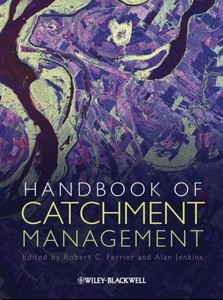Managing the catchments of the Great Barrier Reef
Waterhouse, Jane, Grundy, Mike, Gordon, Iain, Brodie, Jon, Eberhard, Rachel, and Yorkston, Hugh (2010) Managing the catchments of the Great Barrier Reef. In: Ferrier, Robert C., and Jenkins, Alan, (eds.) Handbook of Catchment Management. Wiley-Blackwell, Oxford, UK, pp. 350-375.
![[img]](https://researchonline.jcu.edu.au/15564/6.hassmallThumbnailVersion/15564_Waterhouse_et_al_2010_Book_Cover.jpg)
|
Image (JPEG) (Book Cover)
- Cover Image
Download (78kB) |
|
|
PDF (Published Version)
- Published Version
Restricted to Repository staff only |
Abstract
The Great Barrier Reef (GBR), Australia, is a remarkable structure – both for its abundant biodiversity and its extent. It fringes the north - east Australian coast and the state of Queensland for approximately 2000 km and comprises over 3200 coral reefs embedded in an ecosystem that includes mangrove forests, coastal wetlands and estuaries, seagrass meadows, deep shoals, continental shelf margin and slope. It is the world's largest World Heritage Area. Like many reefs around the world, the GBR is under stress from three main influences: over-harvesting of resources, climate change and terrestrial runoff of contaminants (Pandolfi et al. 2003). The GBR was declared a Marine Park in 1975. It is managed as a zoned, multi-use area with over 30% of the area of all of its 70 bioregions protected in high conservation, no take zones incorporated into a Park - wide zoning plan (Day et al. 2004).
The catchments which adjoin the GBR are equally remarkable in many ways and astonishing in their diversity, but have unfortunately received much less protection. Through runoff of contaminants though, the health of the GBR is intimately connected to the environmental management of these catchments (Haynes et al. 2007), especially with the projected impacts of climate change (Johnson and Marshall 2007). This chapter identifies and examines the challenges to improving management of these catchments for their long-term protection and maintenance of GBR resilience.
These challenges range from understanding the complex biophysical interactions between land and GBR ecosystems through to assessment of the economic and social realities, and the costs and benefits of the change needed for better protection. A substantial start has been made with a Reef Water Quality Protection Plan (the Reef Plan – The State of Queensland and Commonwealth of Australia 2003)and should be accelerated through new Australian Government initiatives including a Reef Rescue Program introduced by the incoming Government in late 2007. Together these two plans will provide a framework and resources for supporting community-based regional Natural Resource Management(NRM) in target setting and investment in management change. New Australian and State (Queensland) Government investment is focussed on these initiatives and on the delivery of supporting science. The response is in essence a complex and broad scale adaptive management exercise. Much of this chapter explores this experience so far.
| Item ID: | 15564 |
|---|---|
| Item Type: | Book Chapter (Research - B1) |
| ISBN: | 978-1-4051-7122-9 |
| Keywords: | Great Barrier Reef, coral reefs, ecosystem, coastal wetlands |
| Date Deposited: | 27 Apr 2011 05:08 |
| FoR Codes: | 05 ENVIRONMENTAL SCIENCES > 0502 Environmental Science and Management > 050205 Environmental Management @ 100% |
| SEO Codes: | 96 ENVIRONMENT > 9606 Environmental and Natural Resource Evaluation > 960604 Environmental Management Systems @ 100% |
| Downloads: |
Total: 1000 Last 12 Months: 4 |
| More Statistics |




